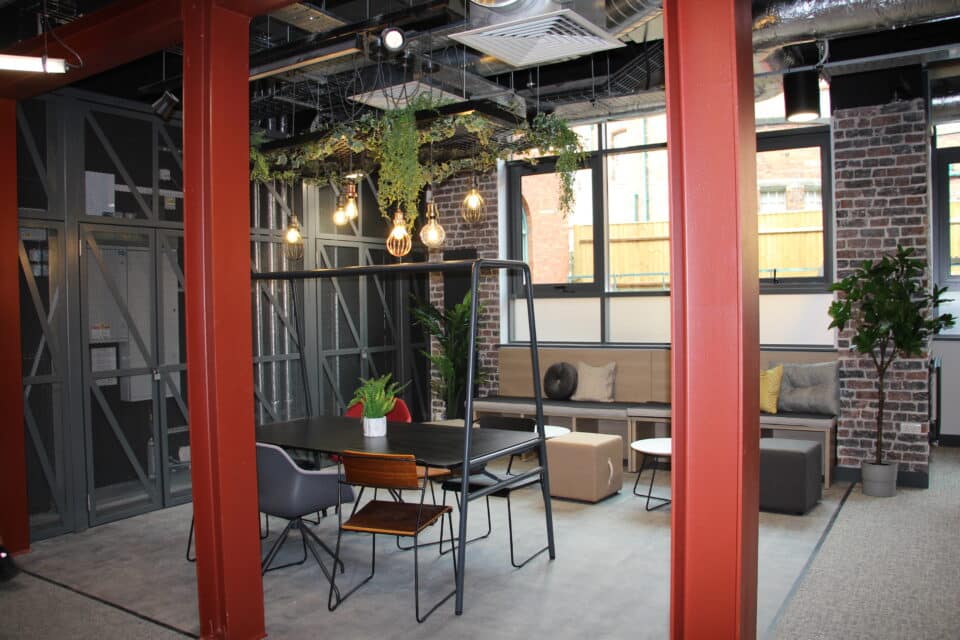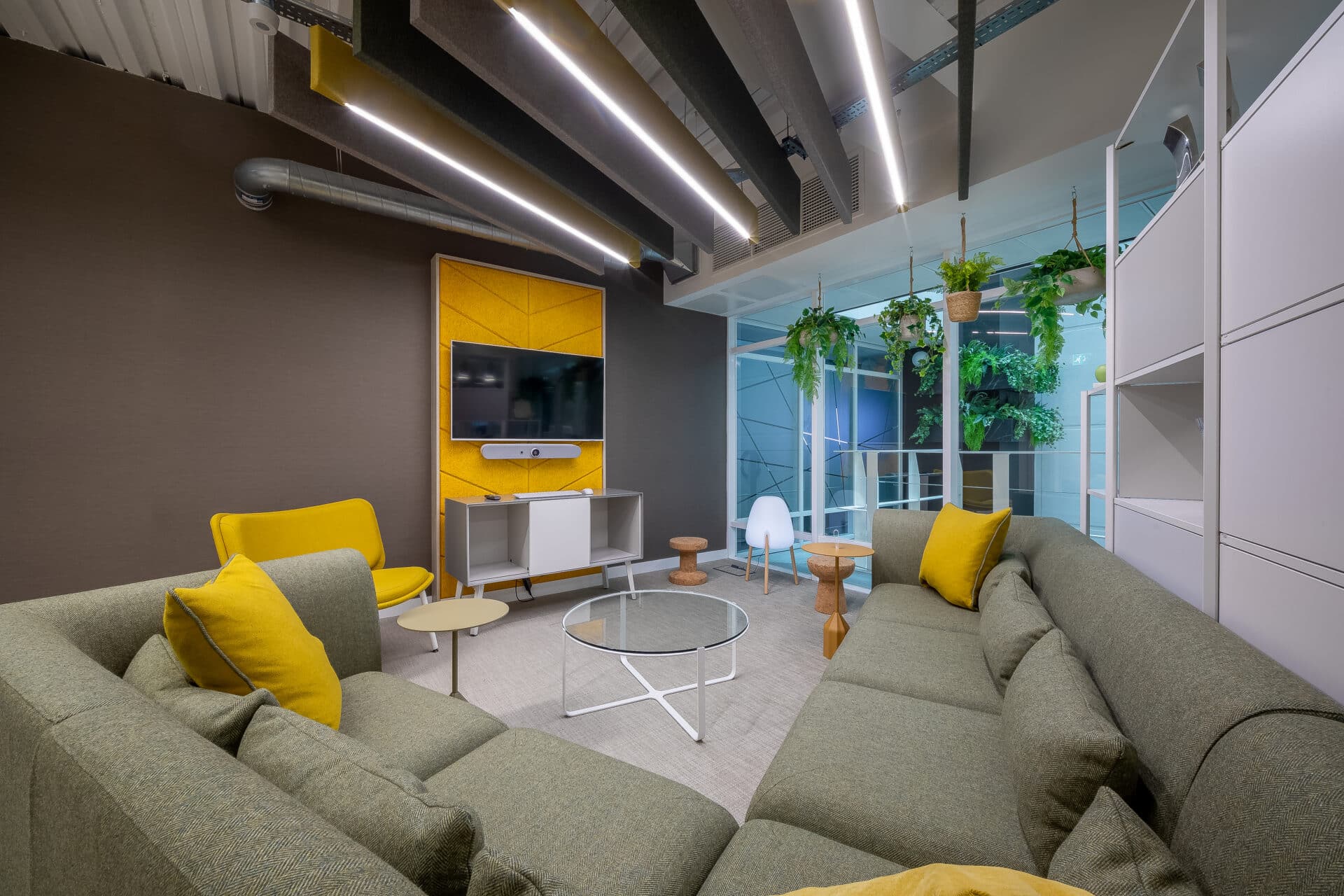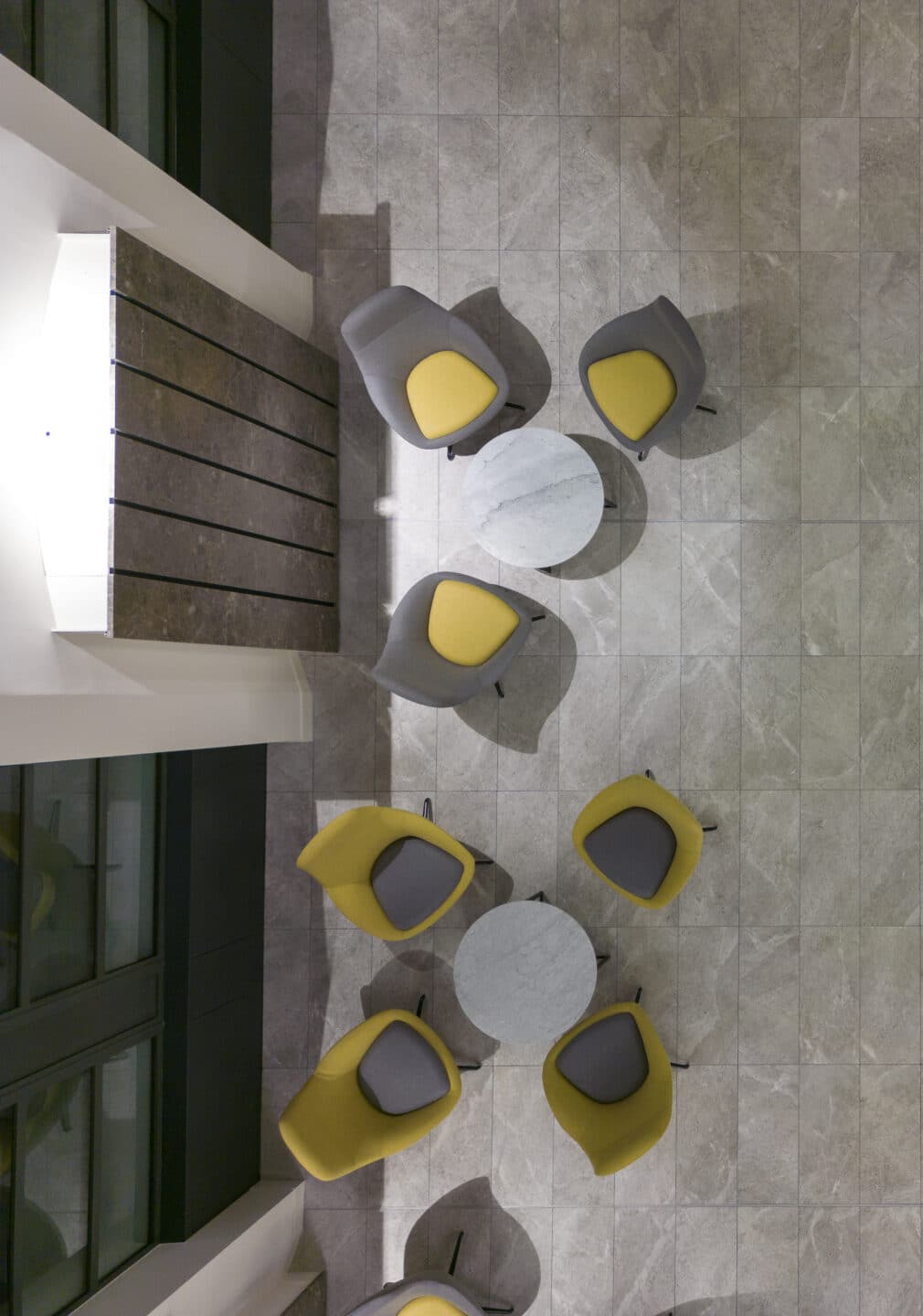The physical environment and Agile Working
There are benefits in re-thinking the working environment to accommodate agile working. Businesses who decide on bold interior design solutions to support agile working give their employees the choice of how and where to work. The workplace culture can be determined by variety in workspaces. Whilst single desks have a place, rows and rows of desks are not the default option for agile working. Variety is essential for employees; not only do employees feel supported in the work they’re doing with more appropriate work spaces, the company culture is reflected and expectations of modern workplace environments are met.
Technology is important in an agile office as in any other. Well integrated, thought out, reliable technology solutions which support mobility and interaction are essential. With the primary ethos being that each task should be able to be carried out in the most efficient way, technology often helps out when space is at a premium. Employees who just need to swing by on their way back from a sales meeting, catch up with colleagues to go over figures and then check emails before heading off to the next meeting have entirely different office\ furniture requirements to the accounts team who genuinely will need a fixed desk area to operate in.






